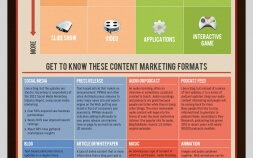While not all businesses have a brand strategy, every business or organization that interacts with the public has a brand image. The question is whether that image is being actively managed or if it’s just occurring happenstance.
That brand image is built (or destroyed) with each and every interaction between you and your customers. The big ones count, of course, like the actual sales transactions. But there are many other brand interactions such as inbound phone calls, all advertising, business cards, web sites, on-hold messages, how clean your bathrooms are, what your employees are wearing, social media posts, and a thousand other things that may seem inconsequential. But they’re all tiny drips into the branding bucket and one bad drop can contaminate the entire container.
What most business people refer to as “having good PR” is really the essence of what a brand is. Your brand is what your customers say about you behind your back. It’s the relationship you have with your current and potential market. It’s the intangible measure of “your good name”.
So since a brand is this intangible thing, how can you gauge the current status of your brand and start actively managing your brand without an expensive market research campaign?
The first step is to look inward. It’s sometimes hard for business owners to develop a consistent brand strategy because they have never really defined what their business is all about. Can you tell me what your company does in one simple sentence? If you can’t, you’re probably not emitting a consistent brand message through marketing and daily operations.
The next step is to randomly pick a few of your current customers and a few potential customers and ask them the same question. If their simple description of the company doesn’t match yours, then you have a problem. You need to focus your brand strategy and messaging.
This blog post provides a nice process for brand development. But no matter what process you use, just remember a brand strategy doesn’t have to be a complex thing. I think it actually works better the more simple it is. Build upon that simple sentence of what your brand represents and reference it every time you do anything related to the business. And I mean anything. All those small drops add up.
The brand shows up in every operational aspect of a business. For example: If you’re trying to build a premium brand and you launch a 99 cent sale when times are tough, you’ve sent conflicting brand messages and destroyed your previous work. Conversely, if you’re a budget destination and are trying to sell expensive upgrades, that pricing decision detracts from the big picture.
The easy place to see branding is in your outbound marketing. All advertising and communications should consistently conform to the brand standards. A bank shouldn’t use the Comic Sans font on their statements. A car wash shouldn’t use gray and black on their external signage.
But the single biggest opportunity for brand development is in customer service. If the marketing that brings them in the door doesn’t match what they find when they get in the door, you’ve wasted your time and money. Share your brand vision with your employees. They’re the ones who will make it happen.
What is the image that your brand is conveying?

